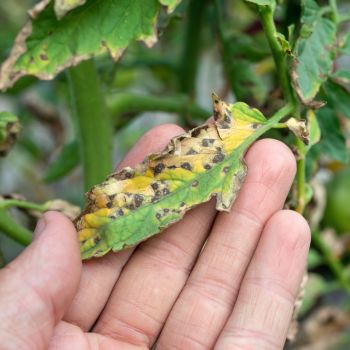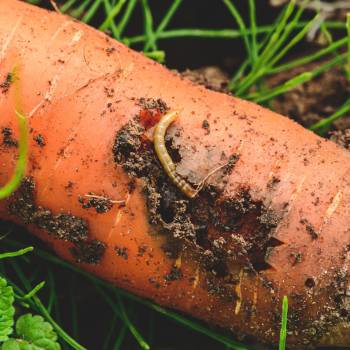The green vegetable bug, or Nezara viridula, is a non-native insect which is common throughout Australia and has a particular fondness for fruit, vegetable and legume crops. Thought to originate in eastern Africa, it now has populations across the globe, and goes under various names including the green stink bug and the green shield bug.
As the names suggest, the adults are bright green, sometimes with lighter spots on the body or head. The adults are roughly 12 to 15mm in length, with a broad, flat, shield shape, and long needle-like mouth parts.
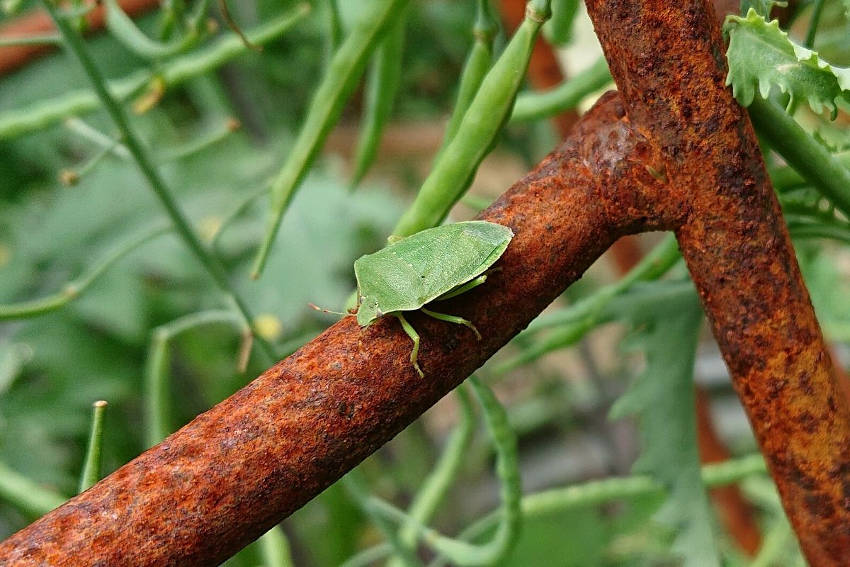
Above: Adult Green Vegetable Bug.
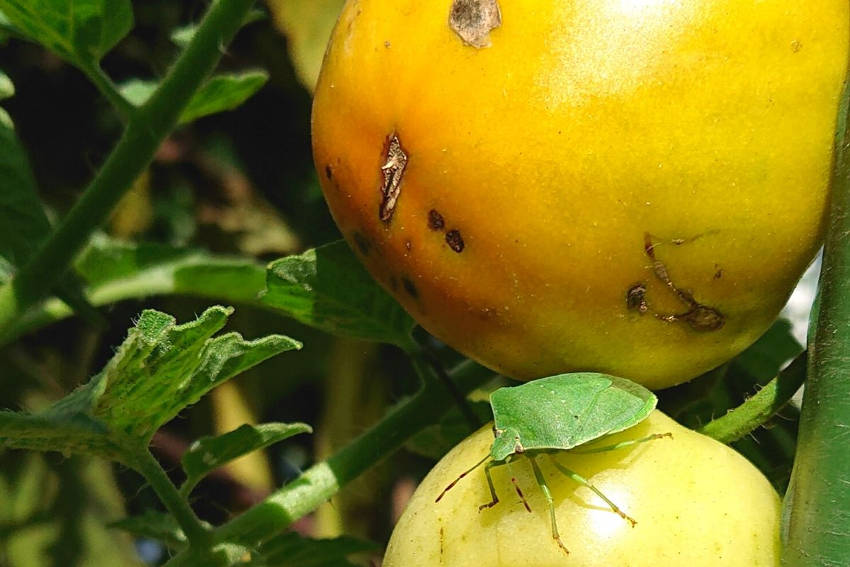
Above: Adult Green Vegetable Bug and damaged caused to tomato.
Green Vegetable Bug Life Cycle
The green vegetable bug can produce up to four generations a year, depending on climate and conditions. In tropical regions, breeding is a continuous cycle, while in temperate areas adults enter a period of dormancy in winter known as the diapause. During this time, the inactive bugs turn a reddish brown and take shelter in cracks and crevices.
The insect's life cycle begins with a female laying between 30 and 150 eggs in a single honeycomb mass, anchored to the underside of leaves. The warmer the weather, the quicker the eggs will hatch, taking between five and 21 days.
Once hatched, the small shiny black nymphs will remain near their vacated eggs for about three days, without feeding. They then undergo their first moult, after which they'll begin feeding on the leaves and shoots nearest to them. In their early life they usually congregate in groups for protection, but as they near adulthood they'll begin to spread out around their host plant.
It takes around five to six weeks from hatching to reach maturity, and during this time the nymphs will moult another four times. Each moult will take them progressively from their juvenile black, through black spotted, to green with coloured patterning on their backs and eventually to their final green easily recognizable form.
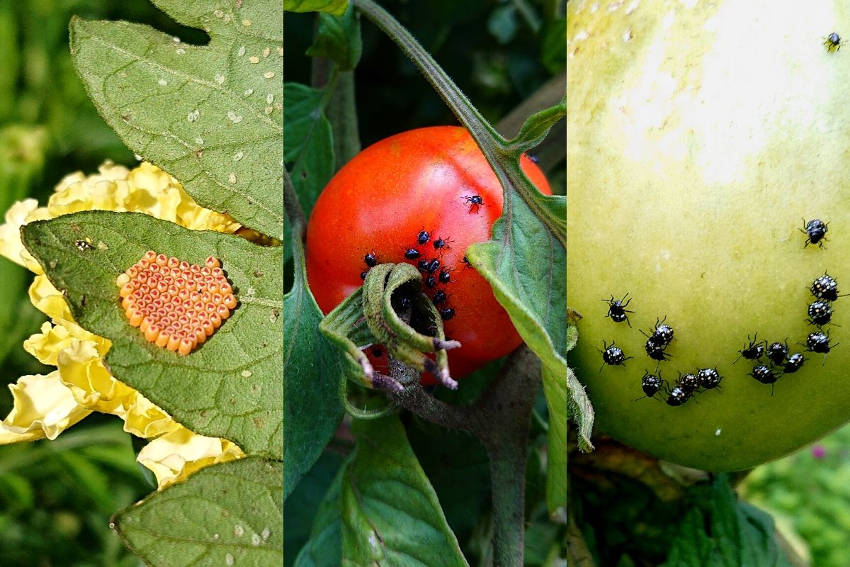
Above left to right: Eggs. Hatched Black Nymphs (second stage). Juveniles (third stage).
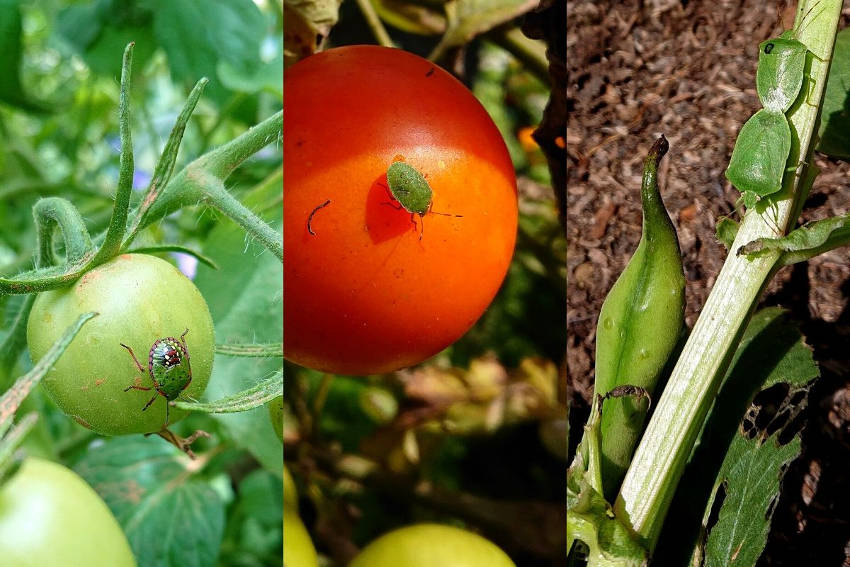
Above left to right: Juvenile (fourth stage). Young Adolescent. Mature Adults mating and damage to Broad bean pod.
Feeding Habits and Damage Caused
The green vegetable bug isn't a fussy eater. Although legumes are a particular favourite, it will happily feast on cucurbits, potatoes, tomatoes, peppers, sweetcorn, fruit, nuts and even some ornamental plants.
To feed, it pierces the plant with its extended mouth parts and sucks out the sap or juice. Nymphs tend to focus on young shoots and leaves, while adult bugs more often head for the fruits, pods, and seeds. You may notice damage on your crops such as hard corky growths on your tomatoes, shriveling of corn kernels or legumes or cat-facing on damaged fruit.
Their feeding causes problems in three ways. Firstly, removing sap deprives the plants of both nutrition and moisture, leading to distortion, withering, and shriveling. Secondly, the physical damage can be enough to impact the plant's growth and can even be fatal in young plants. Lastly, as with other sap-sucking pests, they easily spread viruses and other diseases as they feed.
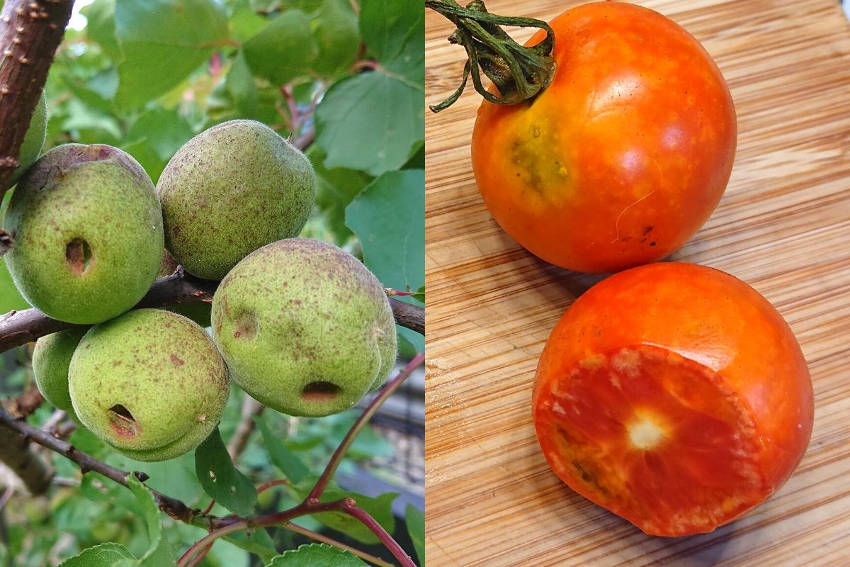
Above left to right: Damage caused to apricots. Damage caused to tomato fruit.
Identification in Your Garden
As relatively large insects, adult green vegetable bugs are fairly easy to spot. Identification can be confirmed by the foul-smelling liquid they emit as a defence measure when disturbed.
However, you're likely to see the damage they cause before finding any actual bugs. Look out for wilting shoots caused by sap loss, mottled and misshapen fruits and seeds, premature flower drop, and all-round reduced vigour.
In their favourite legumes, look for aborted pod development or misshapen pods as a tell-tale sign, along with wet lesions on the stalks or leaves.
Dealing with an Infestation
In the first half of the 20th Century, the green vegetable bug was a serious agricultural pest, laying waste to soybean crops in particular. The problem was partially solved by the introduction of a parasitic wasp, Trissolcus basalis, as a biological control agent.
But while the wasp has been effective on commercial scales, a bug infestation in a home garden can still cause serious damage. Manually removing the insects is unlikely to be successful due to weight of numbers, along with the fact that adults are strong flyers and will easily escape, leaving behind only their trademark aroma.
To quell an infestation, two types of spray can be effective.
- For a quick and eco-friendly solution, make up a mix of water, horticultural soap, chilli powder, and garlic. Spray affected plants liberally to suffocate nymphs and drive adults away.
- For a stronger solution, a pyrethrum spray is an organic option. Made from daisy extracts, it's highly effective against all sap-sucking insects. However, it will also harm beneficial bugs, so use with care and only when necessary.
An alternative to spraying is to dust infested plants with a derris-based product. This is also organic, made from plant root extracts. But again, it will also kill many beneficial insect species, so use only as a last resort.
Dealing with Infested Plants
With a mild infestation, removal of eggs, nymphs, and adults by whichever method may be enough to rescue the situation. With more serious cases, the plant should be disposed of carefully. Don't add it straight to your compost heap or you'll risk spreading adults or unhatched eggs around your garden.
Instead, cut the plants down in place, leave them on the soil surface, and cover the whole area with black plastic. With luck and a couple of sunny days, the soil temperature will exceed the 35°C needed to kill off any eggs or bugs, and you can re-use the area with fresh sowings.
Prevention and Control Methods
As is usually the case in gardening, prevention of pests is better than cure. The following tactics and techniques will help keep green vegetable bug numbers in check, reducing the need for pesticides.
- Use crop rotation to avoid growing the bug's favourite plants in the same location in successive years. This will help to prevent build-up, particularly from overwintering adults.
- Weed thoroughly around all legumes and other susceptible crops. Many common weed varieties are hosts to the bugs and can act as breeding centres.
- Protect vulnerable fruit and vegetables with insect exclusion netting or bags from the seedling stage onward. Also, isolate infested plants under netting to prevent the bugs spreading.
- Crotalaria, or rattlepods, are flowering plants of the legume family which can act as sacrificial decoys, luring the bugs away from your main plants. However, be aware that some species contain toxins and should be avoided near grazing animals.
- Ants can be helpful as natural predators of nymphs, so don't discourage populations unless they're causing a problem in themselves.
- Ladybird beetle larvae will also predate on eggs. While they won't deal with enough to solve an infestation, they're a helpful addition to the overall ecology of your garden, controlling aphids and other pests as well.
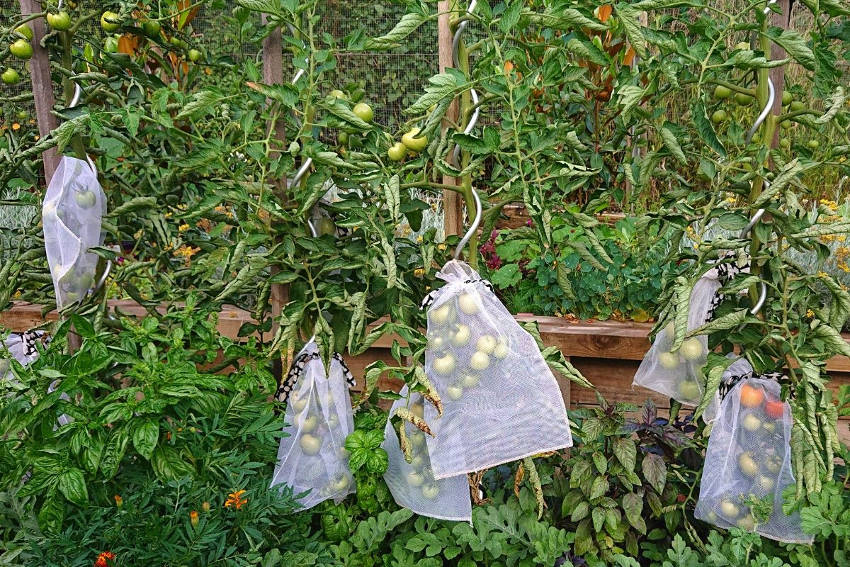
Above: Crop protection bags to protect tomatoes from Vegetable Bug damage.
If you grow legumes or other sap-rich vegetables, you're likely to come up against the green vegetable bug at some point. But taking a little care with these pests in mind will keep the problems they cause to a minimum.
photos by Nat Buttenshaw




